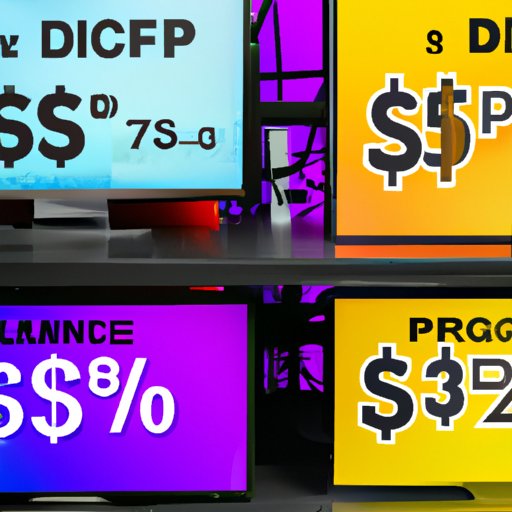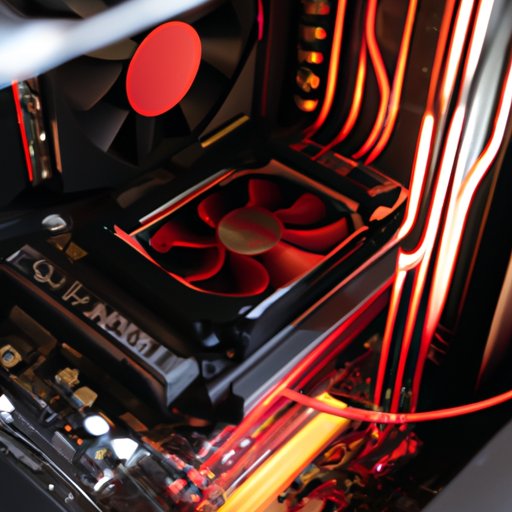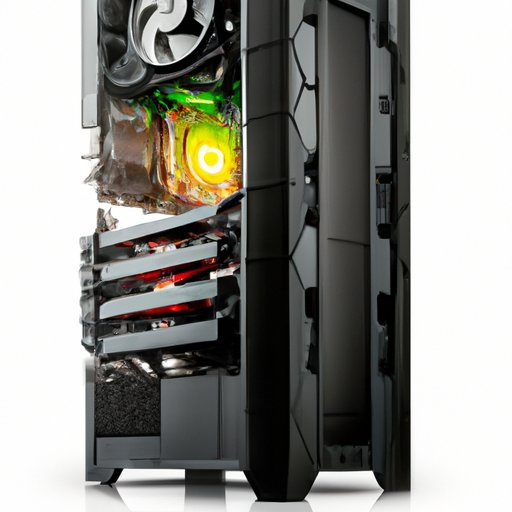Introduction
Gaming PCs are becoming increasingly popular as more people turn to gaming as a hobby or profession. But with so many different components and options available, it can be difficult to understand the cost of building a gaming PC. To help you make an informed decision, this article will explore the average cost of a gaming PC, the different components that impact the price, and the pros and cons of pre-built and custom-built PCs.
What You Need to Know About the Average Cost of a Gaming PC
When it comes to the cost of a gaming PC, there is no one-size-fits-all answer. As PC Gamer explains, “the sky is the limit when it comes to building a gaming PC.” While there are some budget systems out there, high-end gaming PCs can cost thousands of dollars.
Factors that Impact Price
The price of a gaming PC depends on several factors, including the type of components used, the brand, and the performance level. For instance, a higher-end processor or graphics card will increase the cost of the system. Additionally, some brands are more expensive than others, and certain components may have limited availability.
Budgeting for High-Performance PCs
If you’re looking to build a high-performance gaming PC, it’s important to plan ahead and budget accordingly. According to PC Gamer, “You should expect to spend at least $800 to get a decent gaming rig, and that’s on the conservative side.” However, if you’re willing to invest more money, you can build a powerful system that will last for years.

Exploring Different Price Ranges for Gaming PCs
When it comes to building a gaming PC, there are three main categories: entry-level, mid-range, and high-end. Each category has its own advantages and disadvantages, so it’s important to consider your needs before making a decision.
Entry-Level PCs
Entry-level PCs are designed for casual gamers who don’t need the latest and greatest hardware. These systems typically cost between $500 and $800, and they offer enough power to play most modern games. However, they may not be able to handle intensive tasks like streaming or virtual reality.
Mid-Range PCs
Mid-range PCs are designed for gamers who want more power without breaking the bank. These systems typically cost between $1000 and $1500, and they offer enough power to handle most modern games with ease. Additionally, they are capable of handling more intensive tasks like streaming and video editing.
High-End PCs
High-end PCs are designed for serious gamers who want the best performance possible. These systems typically cost between $2000 and $4000, and they offer enough power to play any game with maximum settings. Additionally, they are capable of handling intensive tasks like streaming, video editing, and virtual reality.

Components that Impact the Cost of a Gaming PC
When it comes to building a gaming PC, the components you choose will have a major impact on the overall cost. Here are some of the most important components to consider:
Processor
The processor is the brain of the computer, and it determines how quickly the system can run. Higher-end processors are more powerful and more expensive, but they are also more capable of handling intensive tasks. When selecting a processor, it’s important to consider the type of games you plan to play and the performance level you want.
Graphics Card
The graphics card is responsible for processing the visuals for games and other applications. Higher-end graphics cards are more powerful and more expensive, but they are also better suited for playing games with maximum settings. When selecting a graphics card, it’s important to consider the type of games you plan to play and the resolution you want.
Memory
Memory is responsible for storing data and running programs. Higher-end memory is faster and more expensive, but it is also better suited for multitasking and running multiple programs at once. When selecting memory, it’s important to consider the type of programs you plan to run and the amount of multitasking you plan to do.
Storage
Storage is responsible for storing files and applications. Higher-end storage is faster and more expensive, but it is also better suited for storing large files and applications. When selecting storage, it’s important to consider the type of files you plan to store and the amount of storage you need.
Motherboard
The motherboard is the backbone of the system, and it determines which components can be used. Higher-end motherboards are more expensive, but they are also more capable of handling high-end components. When selecting a motherboard, it’s important to consider the type of components you plan to use and the performance level you want.
Power Supply
The power supply is responsible for providing power to the components. Higher-end power supplies are more efficient and more expensive, but they are also better suited for powering high-end components. When selecting a power supply, it’s important to consider the wattage you need and the type of components you plan to use.
Cooling System
The cooling system is responsible for keeping the components from overheating. Higher-end cooling systems are more powerful and more expensive, but they are also better suited for keeping the system cool. When selecting a cooling system, it’s important to consider the type of components you plan to use and the environment in which the system will be used.
Comparing Pre-Built and Custom-Built Gaming PCs
Once you’ve decided on the components for your gaming PC, you’ll need to decide whether to go with a pre-built system or a custom-built system. Both options have their advantages and disadvantages, so it’s important to weigh the pros and cons before making a decision.
Pros and Cons of Pre-Built PCs
Pre-built PCs are ready-to-use systems that come with all the components already installed. The main advantage of pre-built PCs is that they are often cheaper than custom-built systems, since they require less time and effort to assemble. However, pre-built systems are usually limited in terms of customization and performance.
Pros and Cons of Custom-Built PCs
Custom-built PCs are systems that you build from scratch using individual components. The main advantage of custom-built PCs is that they can be customized to meet your exact needs and specifications. However, custom-built systems are usually more expensive and require more time and effort to assemble.
Which is More Cost-Effective?
Ultimately, the cost-effectiveness of a gaming PC depends on the components you choose and the type of system you build. Pre-built systems are usually cheaper and easier to assemble, but they are often limited in terms of customization and performance. Custom-built systems are usually more expensive and require more time and effort to assemble, but they can be customized to meet your exact needs and specifications.
Conclusion
Building a gaming PC can be overwhelming, especially when it comes to understanding the costs. This article explored the average cost of a gaming PC, the different components that impact the price, and the pros and cons of pre-built and custom-built PCs. Ultimately, the cost-effectiveness of a gaming PC depends on the components you choose and the type of system you build. If you take the time to research the components and budget accordingly, you can build a powerful system that will last for years.
(Note: Is this article not meeting your expectations? Do you have knowledge or insights to share? Unlock new opportunities and expand your reach by joining our authors team. Click Registration to join us and share your expertise with our readers.)
